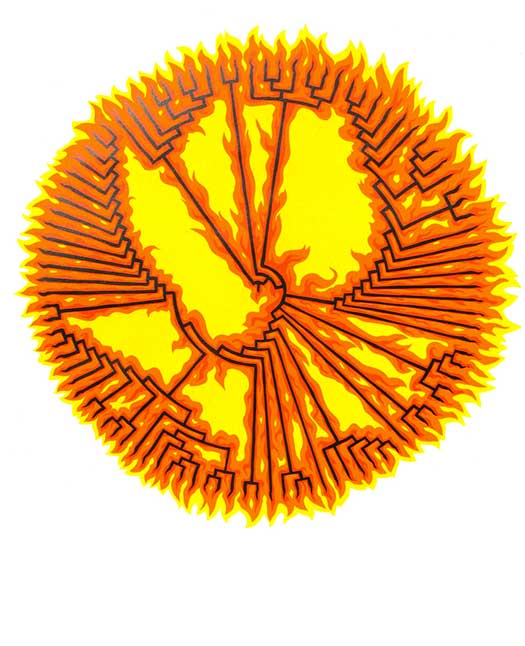
Image from Copperflora.org.
When I decided to reembark on this series of posts about extinct species, I did a check through my copious bookmarks to see if anything jumped out at me as an appropriate subject. Nothing did at first, so I decided to consult the great Extinction Oracle: the Red List of the International Union for the Conservation of Nature (IUCN). Lacking any particular direction I clicked to the list of extinct species and then clicked on the item at the top of the list, a plant in the Euphorbia family named Acalypha Dikuluwensis.
A serendipitous choice.
It turns out that Acalypha Dikuluwensis (hereafter referred to as A.D.) grew only in the Democratic Republic of Congo. I spent three months in Congo last year, a culmination of a personal obsession rooted in family, history, and biology, and to find this small flowering plant at the top of this list took my breath away a little bit. As I read the entry on the Red List, it dawned on me that the story of A.D. had those peculiar characteristics that so often inhabit news or stories about the Congo, a synthesis of diverse factors leading to a haunting coda.
A.D. was a metallophyte, a variety of plant that is adapted to life in soils with high concentrations of metals, soils that would be toxic to many of the world’s other plants. It grew in the Katangan copper-belt, a region of southern DR Congo that contains some of the highest concentrations of copper and cobalt anywhere in the world. The low hills of Katanga provided the copper that drove much of the communications and industrial technology of the 20th Century. The riches in that soil were prime motivators in the colonial and post-colonial scrambles for Africa by European states. Katanga’s mineral deposits and the fact of its dominance by foreign industrial powers led it to secede from the newly independent Congo in the early 60’s, precipitating the bloody war, rebellion, and social collapse that set the stage for the rest of Congo’s grim 20th Century story.
Mining techniques, of course, were not subtle. For 60 years the copper hills have been scraped down by enormous digging machines and carted to the smelters in colossal trucks. The complex and specialized endemic flora of the copper hills went with them, dwindling as the metal-rich soils they had adapted to were hauled away. Biologists searching for A.D. reported no sightings after 1959, and the plant was officially considered extinct in 2012.
Read more about the Copper Belt flora here.







